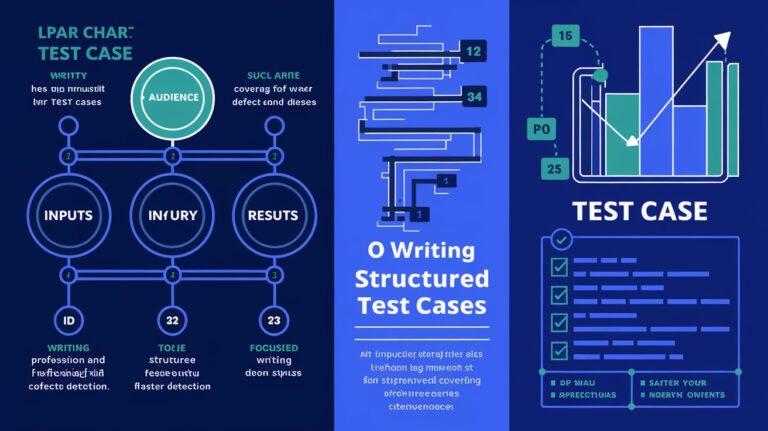Introduction to Software Quality Assurance

Software Quality Assurance (SQA) is a systematic process designed to ensure that software development projects adhere to defined standards, processes, and methodologies. It encompasses a broad range of activities throughout the software development lifecycle, from requirements analysis to deployment and maintenance. The primary goal of SQA is to prevent defects, identify and address issues early, and ensure that the software meets or exceeds user expectations.
The Role of Quality Assurance in Software Development

Quality Assurance is integral to the software development process for several reasons:
Prevention of Defects: SQA professionals participate in the early stages of software development to analyze project requirements. They work with stakeholders to clarify ambiguities, ensuring that requirements are clear, complete, and testable. This proactive approach helps prevent misunderstandings and errors that could lead to costly rework later in the project1.
Early Detection of Issues: By conducting thorough testing and quality checks, SQA teams can identify and correct defects early on. This reduces the likelihood of costly rework and enhances the overall quality of the software product.
Enhanced Customer Satisfaction: Quality assurance is crucial for maintaining customer satisfaction and loyalty. Delivering reliable, efficient, and user-friendly software products leads to higher levels of customer satisfaction and retention.
Cost Savings: Identifying and addressing issues early in the development cycle saves time and resources in the long run. This proactive approach reduces the need for extensive debugging and rework post-release1.
Key Methodologies in Software Quality Assurance

Several methodologies are employed in SQA to ensure high-quality software products:
1. Agile Methodology
Overview: Agile is a flexible and iterative approach that emphasizes early and continuous delivery of valuable software. It involves working in sprints, where teams adapt to evolving project requirements and reflect on feedback from previous iterations.
Benefits: Agile reduces risks associated with project development by allowing for quick adaptation and improvement based on user feedback.
2. Waterfall Methodology
Overview: The Waterfall model follows a sequential progression through distinct phases like requirements analysis, design, implementation, testing, deployment, and maintenance. Each phase must be fully completed before moving on to the next.
Benefits: This model is beneficial for projects with stable requirements, offering a clear and structured approach.
3. Verification and Validation (V-Model)
Overview: The V-Model emphasizes validation and verification at each stage of the software development lifecycle. It ensures that the software meets the specified requirements and functions correctly4.
Benefits: This model provides a systematic approach to testing, ensuring that software meets both functional and non-functional requirements.
Best Practices in Software Quality Assurance

Implementing the following best practices can enhance the reliability and performance of software products:
Automated Testing: Implementing automated testing tools can significantly reduce manual testing time and increase the efficiency of the testing process.
Code Reviews: Regular code reviews help ensure that code is of high quality, secure, and maintainable. This practice also fosters knowledge sharing among team members.
Continuous Integration and Continuous Deployment (CI/CD): CI/CD automates integration, testing, and deployment processes, facilitating rigorous testing and efficient updates. It streamlines development and maintains consistent software quality metrics.
Stakeholder Engagement: Engaging stakeholders throughout the development process ensures that software meets user expectations and requirements.
Types of Software Testing

Software testing involves various methods to ensure that software functions as intended:
Black Box Testing: Focuses on the inputs and expected outputs without knowledge of the internal workings. It checks the functionality of the software, ensuring it meets user demands.
White Box Testing: Requires knowledge of the code to evaluate structural parts of the application. It enhances security and reveals hidden defects5.
Gray Box Testing: Combines black and white box techniques, testing both functional and structural aspects.
Exploratory Testing: A creative process of learning the system while interacting with it, enabling rapid feedback on the product’s quality from a user’s perspective.
Benefits of Software Quality Assurance

The benefits of integrating SQA into software development are multifaceted:
Improved Product Quality: SQA ensures that software products are reliable, efficient, and meet user expectations.
Enhanced Customer Satisfaction: Delivering high-quality software leads to increased customer satisfaction and loyalty.
Reduced Time-to-Market: Early detection and correction of defects reduce the time required to bring a product to market.
Cost Savings: Identifying issues early saves costs associated with rework and debugging post-release.
Industry Statistics on Quality Assurance

Recent surveys highlight the importance of SQA in software development:
Essential for Success: 89% of software development companies believe that quality assurance is essential for product success.
Customer Satisfaction: Companies investing in quality assurance practices report a 30% increase in customer satisfaction and a 25% reduction in product defects.
Conclusion

In the modern software development landscape, Software Quality Assurance is not just a necessity but a critical differentiator for successful projects. By implementing robust SQA practices, companies can deliver high-quality software products that meet user expectations, enhance customer satisfaction, and drive business success. As technology continues to evolve, the role of SQA will remain pivotal in ensuring that software applications are reliable, efficient, and user-friendly.















